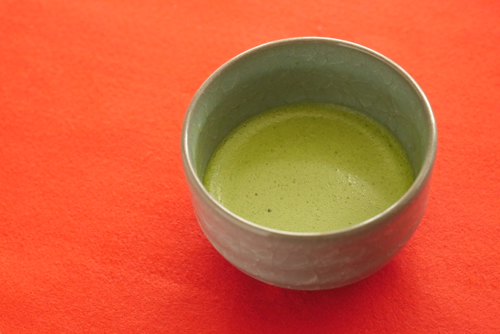Posted by TOKYO MATCHA SELECTION on 21st Apr 2017

The history of utensils
There are many utensils for Japanese tea ceremony. The utensils are not just tools but they are something that contributes to Japanese tea ceremony as an integrated art. People who participate in Japanese tea ceremony can enjoy appreciating them.
The culture of Japanese tea ceremony came from China. So, utensils for Japanese tea ceremony were brought from China as well. Tea masters have conveyed many tools from ancient times.
In the period of Kamakura, "Karamono" (唐物) was famous among people. Karamono is a thing from China such as teaware, pottery, painting, scroll, and so on. There were Zen monks who went to China to learn about Zen. They brought Karamono to Japan when they came back. Karamono was expensive and hard to get at that time. When samurai became a new ruling class, they tried to get Karamono and showed off them.
In the period of Muromachi, "Wamono" (和物) became popular instead of Karamono. Wamono is a thing that is made in Japan. The pottery of Wamono had simplicity and beauty that Karamono did not have. Juko Murata, a tea master, adapted Wamono into Japanese tea ceremony. He was one of people who established "Wabicha".
Sen no Rikyu, a tea master, tried to adapt things that are used in daily life into Japanese tea ceremony. This action is called "Mitate" (見立て). Mitate means that not seeing things as they are but seeing them as different things. This word came from an old Japanese literature. Mitate is important for Japanese tea ceremony and you can try to adapt things you are using in daily life into Japanese tea ceremony with the spirit of Mitate.
So, Utensils for Japanese tea ceremony have developed as time goes by. Nowadays, there are many kinds of Karamono and Wamono. People use them together for Japanese tea ceremony. It's important to learn about utensils and how to use them.
The beauty of Wabi and Sabi
There are two kinds of beauty that Japanese has in mind although ordinary Japanese people are not conscious of them. They are called "Wabi" and "Sabi". The beauty of Wabi and Sabi has developed through Japanese tea ceremony. Wabi means that one tries to find the satisfaction of heart even in a poor situation. Sabi means that one tries to find deep and rich beauty in quietness.
Let’s introduce the example for the beauty of Wabi. Say, a utensil does not have enough beauty by itself. However, if it combines with other utensils, they might become beautiful as a whole. The utensil of Wabi has simple color and shape. It is not beautiful by itself. However, if you have the beauty of Wabi, you can see the beauty for things that are not beautiful. This needs the psychological training of trying to see beauty when there is no beauty. If you are well trained, you can feel satisfaction in your heart in the situation that seems to be no satisfaction. These training are included in Japanese tea ceremony. Japanese tea ceremony is not just to learn about utensils but also to learn how you see things and feel things. This is more important than just knowing utensils.
Here are utensils that you need to know
Teaware
Teaware is a container that you can put matcha powder into. There are two kinds of teaware. They are called Chaire and Usuchaki. Chaire has various shapes and colors. It is the teaware for storing thick matcha powder. Chaire used to be a container that holds spices. Karamono's Chaire is considered as superior teaware than Wamono Chaire. Usuchaki is the teaware that holds thin matcha powder. Natsume tea caddy is one of Usuchaki.
After putting matcha powder into teaware, you can place it in front of a guest. Tea masters have taken good care of teaware because it is one of the most important tools for Japanese tea ceremony.
Matcha bowl
A matcha bowl was made in China originally. It was one of teawares. It is a bowl that you pour matcha and drink it with. There are mainly 3 kinds of matcha bowl, Karamono, Wamono, and Kourai. Kourai means things coming from Korea. A guest can appreciate the shape and color of a matcha bowl. It is the most familiar utensils of Japanese tea ceremony.
Matcha whisk
A matcha whisk is a thing that beats the matcha softly. Its material is bamboo. You need a matcha whisk to make matcha.
Tea scoop
A tea scoop is a small and slim ladle that picks up the matcha. Generally, it is made of bamboo. It is not difficult to make, so, tea masters made it by themselves in an old time. However, a beginner should not make it by oneself. When this is not in use, it is put in a pipe. In old days, it was made and disposed every time Japanese tea ceremony held. Therefore, unlike other utensils, the old tea scoop can't be found now.
Fukusa
Fukusa is a silk wrapper that is used to wipe teaware or to put under utensils when appreciating. It is not an outstanding thing for Japanese tea ceremony but is indispensable. Kobukusa is a smaller version of Fukusa. You can select color and design you like.
Sensu
Sensu is a folding fan. When having Japanese tea ceremony, you put Sensu in front of you and greet. You can express respect for others by doing that.